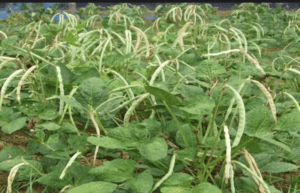Cowpea Production: Cowpea is a leguminous plant that is rich in protein, fibre and other important elements such as calcium, magnesium, phosphorous, thiamine, niacin, riboflavin, pantothenic acid, vitamins A, C, and B6. Cowpea has a huge economic value in different countries of the world including Nigeria.
Due to its ability to withstand heat and drought, Cowpea thrives well in tropical continents such as Africa, Europe, Asia, and America. Cowpea can adapt to the soil of various types even soils of low fertility. It has a quality to prevent erosion, as it quickly covers the ground.
When it comes to cowpea production in Nigeria, there are certain challenges faced by farmers that needs to be tackled effectively in order to maintain the country’s production status. These include:
- Pests and diseases – The Nigerian cowpea plants are often attacked by different pests and diseases. These pests tend to extract juice from their leaves and spread viruses, in particular, cowpea mosaic one. The plant is also attacked by various diseases which are caused by the bacteria, viruses, and fungi.
- Parasitic weeds – The parasitic types of weeds, Alectra and Striga, prevent the growth of plants at all stages and choke them.
- Nematode attacks – Nermatodes work by preventing the roots of the plant from absorption of nutritional substances and water from the earth soil.
- Attack by pathogens – pathogens come in three types namely: Pythium, Rhizoctonia, and Fusarium. They cause rotting of the roots along with damping off.
These problems are quite common, and in case the diseases manage to affect the seeds before germinating, the seeds have a very little chance of growing out of the soil.
To tackle these challenges, it is recommended to plant the seeds in late spring, when the soil is already warmed up. These diseases usually appear in cool and moisturized environment. Pesticides that does not affect plant should be used to ward off pests and diseases. Also, the seeds should not be planted too close to one another.